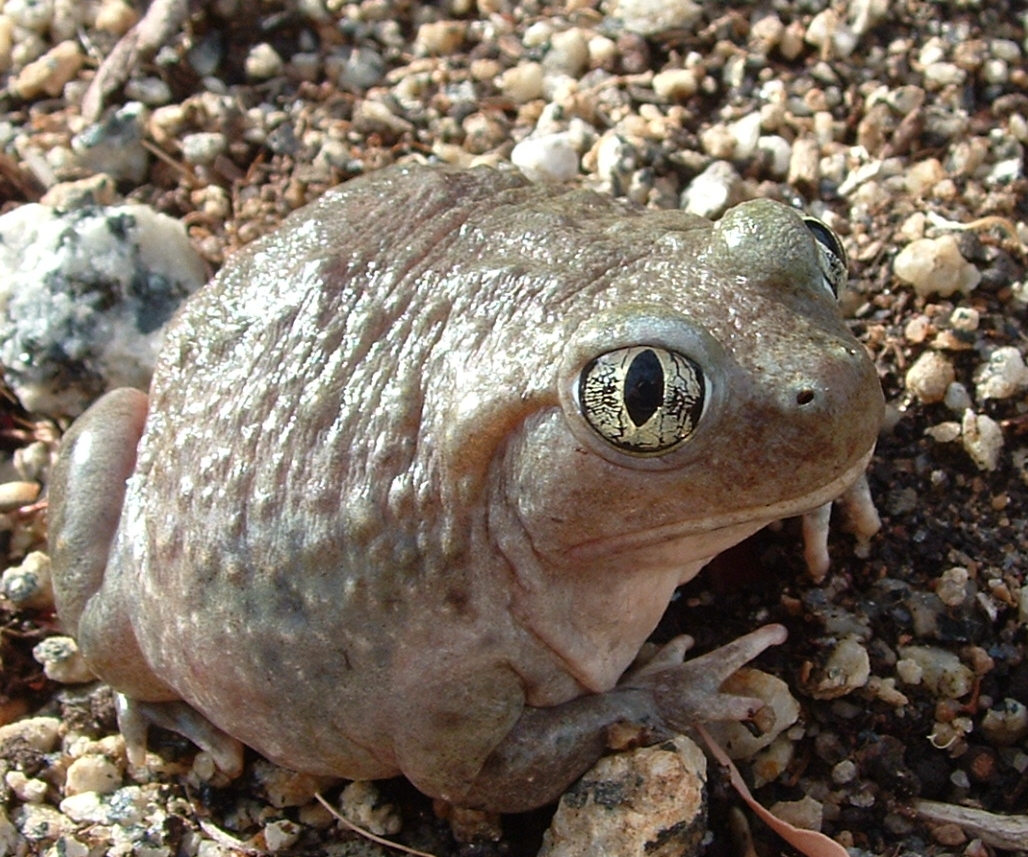- Spea hammondii
Taxobox | name = "Spea hammondii"
status = NT | status_system = IUCN3.1
trend = down

image_width = 240px
regnum =Animalia
phylum =Chordata
classis =Amphibia
ordo =Anura
familia =Scaphiopodidae
genus = "Spea "
species = "S. hammondii"
binomial = "Spea hammondii"
binomial_authority = Baird, 1859The Western spadefoot toad ("Spea hammondii") is a relatively smooth-skinned species of
toad . Its eyes are pale gold with vertical pupils. It has a green or grey dorsum often with skintubercle s tipped in orange, and it is a whitish color on the ventrum. It has a wedge-shaped black spade on each hind foot. Adult toads are between 3.8 and 7.5 cm long.Juveniles western spadefoot toads look similar to adults, but have more distinct spotting.
Populations of "Spea hammondii" are localized, but widespread. The western spadefoot prefers grassland, scrub and
chaparral locally but can occur in oak woodlands. It is nocturnal, and activity is limited to the wet season, summer storms, or during evenings with elevated substrate moisture levels. It is easily handled, with less skin secretions than similartoad species. Their secretions smell likepeanut butter and may cause sneezing.Fact|date=October 2008References
* Database entry includes a range map and justification for why this species is near threatened
* This article is based on a description from "A Field Guide to the Reptiles and Amphibians of Coastal Southern California", Robert N. Fisher and Ted J. Case, USGS, http://www.werc.usgs.gov/fieldguide/index.htm.
Wikimedia Foundation. 2010.
